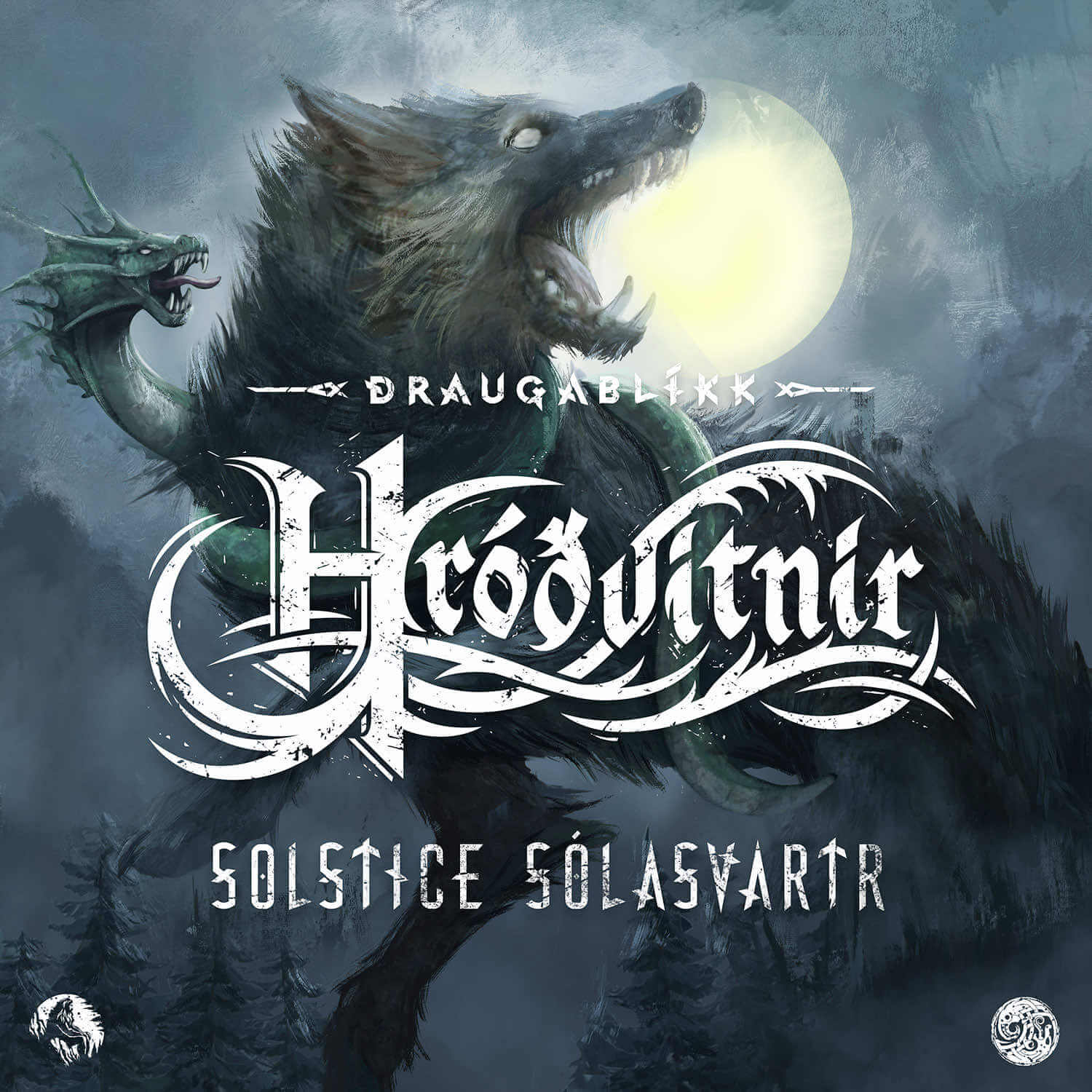
In winter’s shadowed clutch, solstice wakes, a harbinger of the dimmest day, night’s longest span, entwined in Yule’s ancient rites. A juncture of stark transformation, as the sun, in its ageless orbit, commences its languid ascent to northern skies, foretelling light’s renewal.
♫ Hróðvitnir Hróðvitnir svartumann
We will hunt for truth
For the ancient one
Oh Hróðvitnir Hróðvitnir svartumann
We will hunt you out
We will cut you down ♫
Amidst Norse lore’s rich weave, Fenris looms – a titanic wolf, Loki’s spawn. Known too as Hróðvitnir, Vánagandr, a visage of dread and awe.
In olden sagas, such names breathe softly; “heiting” – stand-ins for words too potent, too hallowed, or too dreaded to voice, lest their mere utterance beckon these ancient forces.
Hróðvitnir, a name echoing ravenous fury, untamed ferocity, truly befits the wolf’s nature, one of desolation and predation. Gods’ captive, yet destined to shatter bonds, Fenris (as Hróðvitnir) is foreordained to devour the sun in Ragnarök’s cataclysm, the prophesied twilight of all.
This mythic wolf, Hróðvitnir, mirrors solstice’s shadow. He personifies the engulfing obscurity that swathes the world in this most prolonged night. Yet, as Yuletide breaks, intertwining with Christmas traditions, the solstice also heralds the sun’s resurgence and the days’ gradual elongation.
Hróðvitnir’s eventual fall, enabling the sun to continue its heavenly course, symbolizes the triumph of light over darkness, a perennial cycle echoed in the cosmos’ cadence.
Follow the old ways — join the Fornleið.